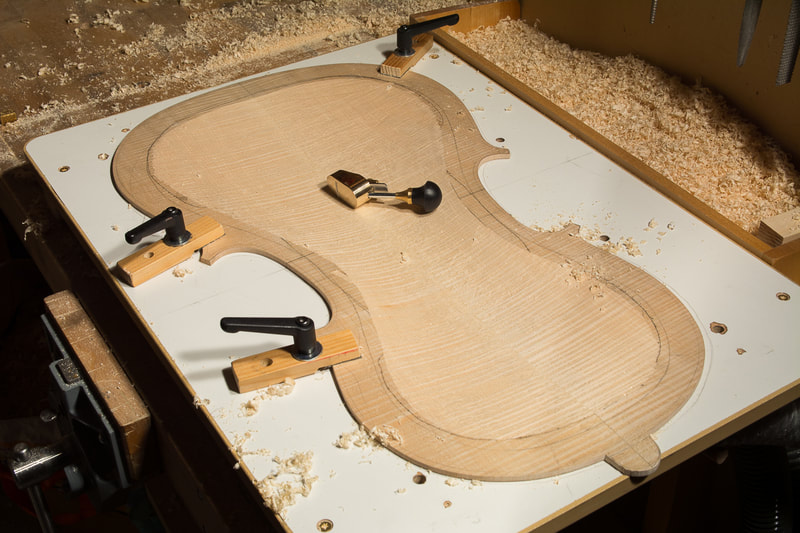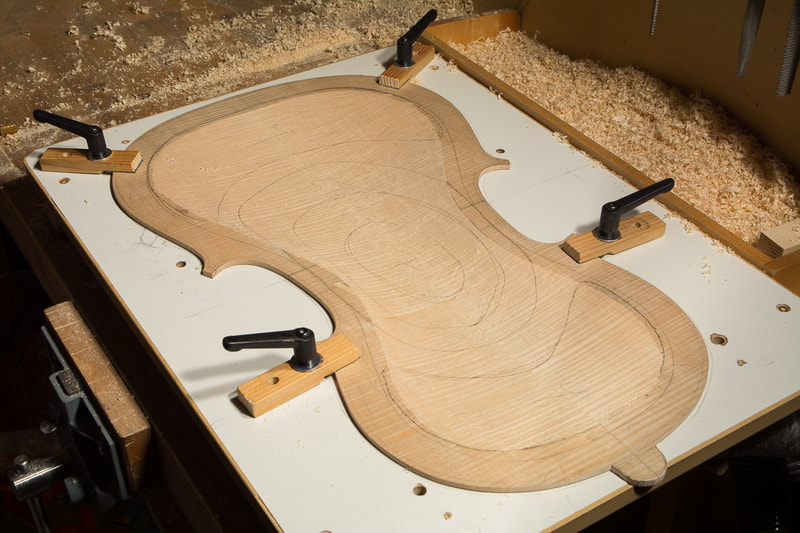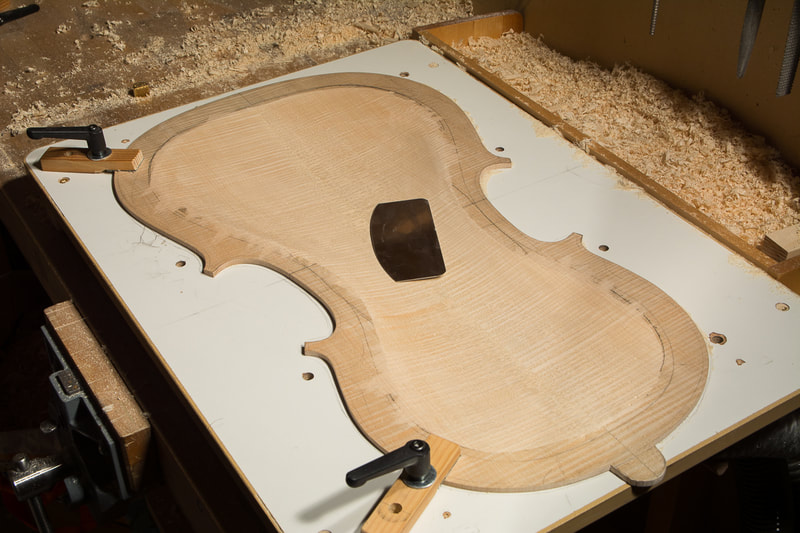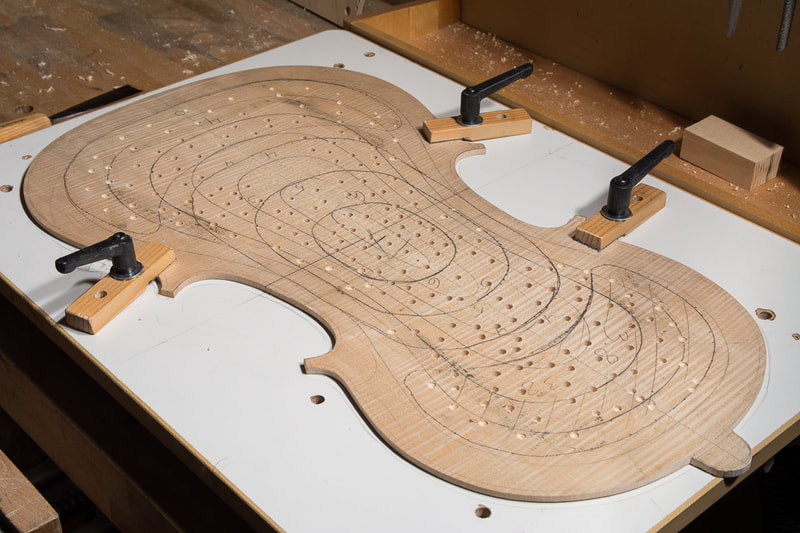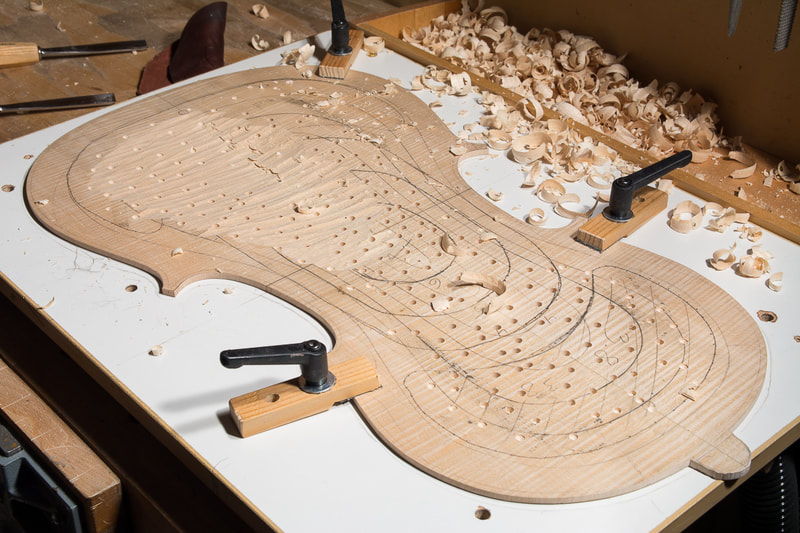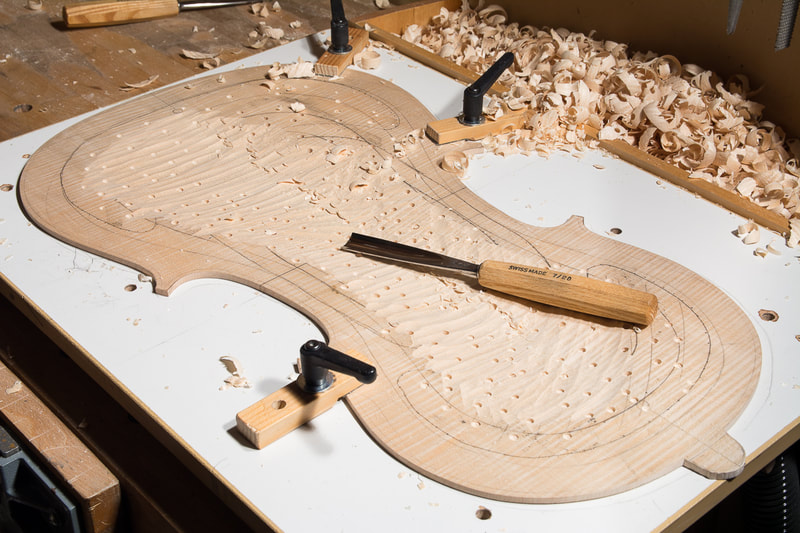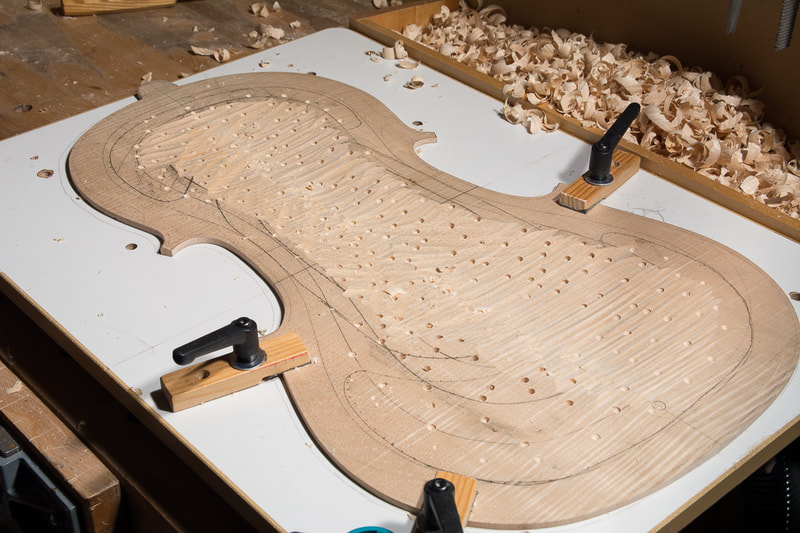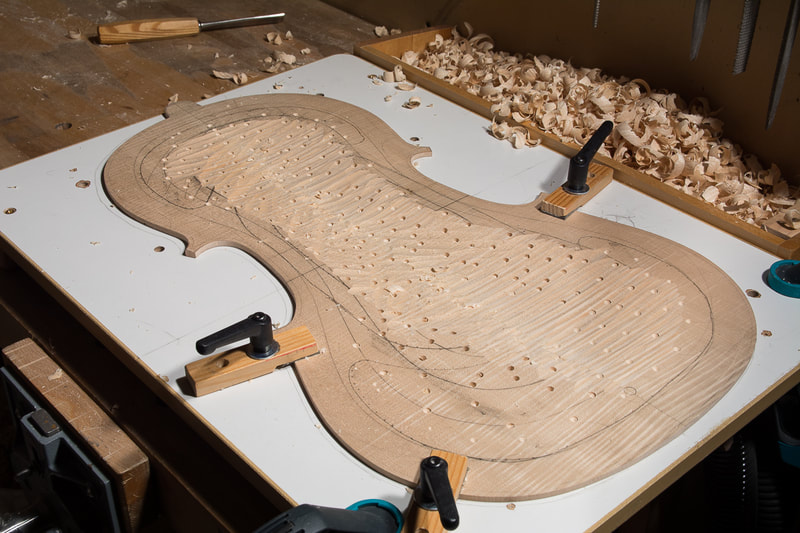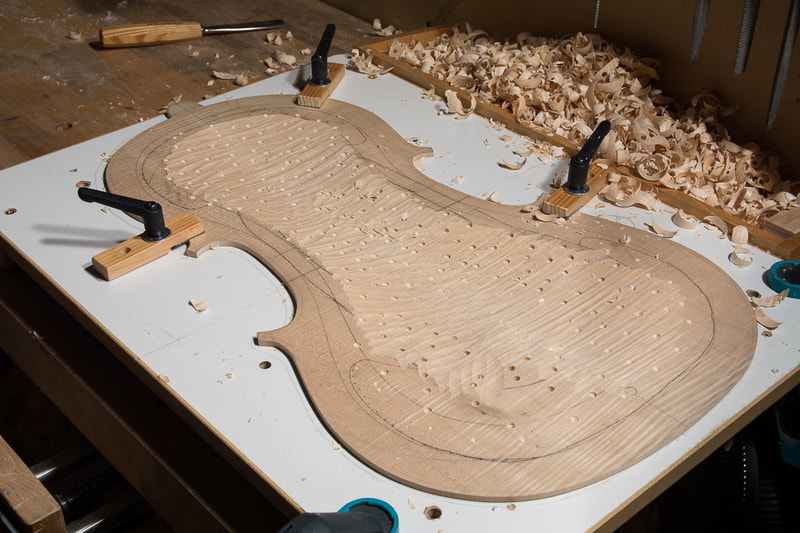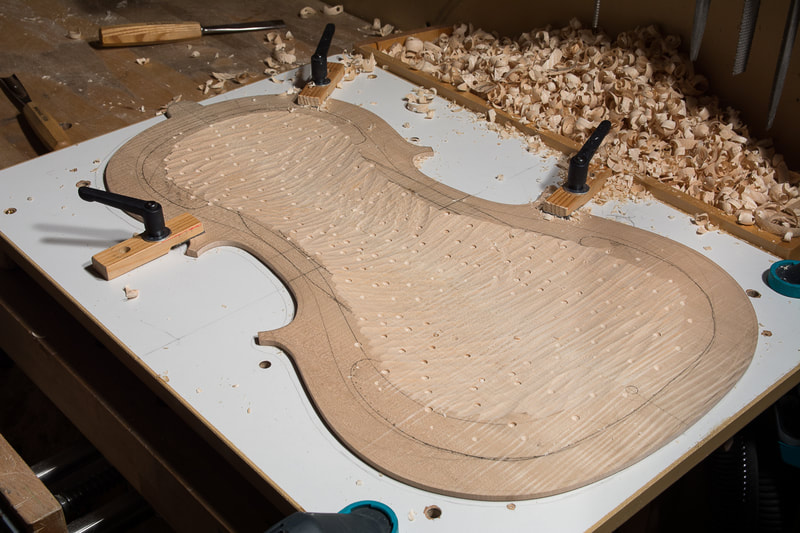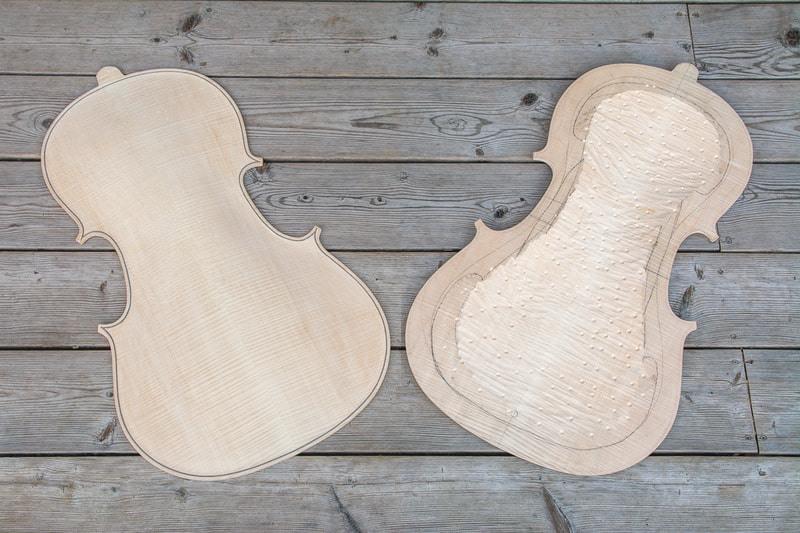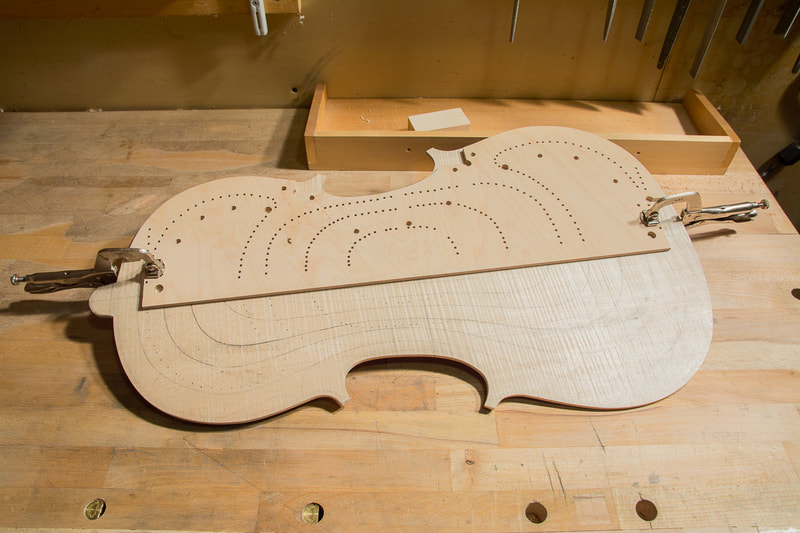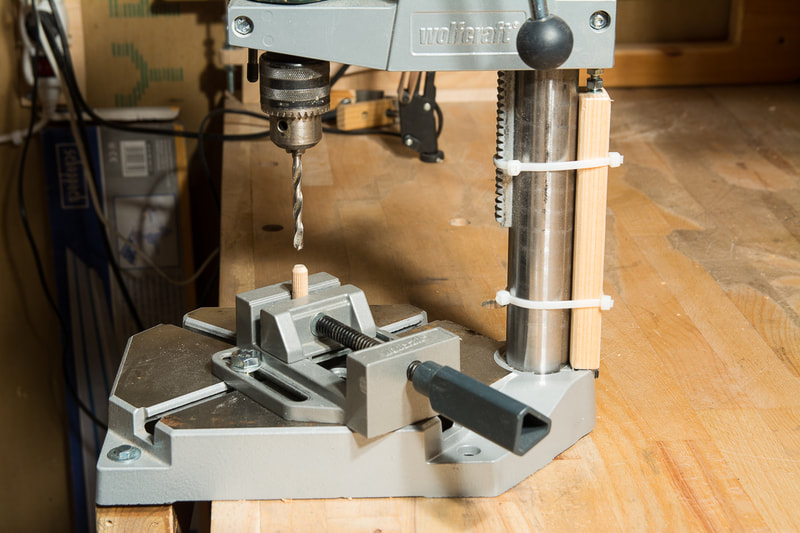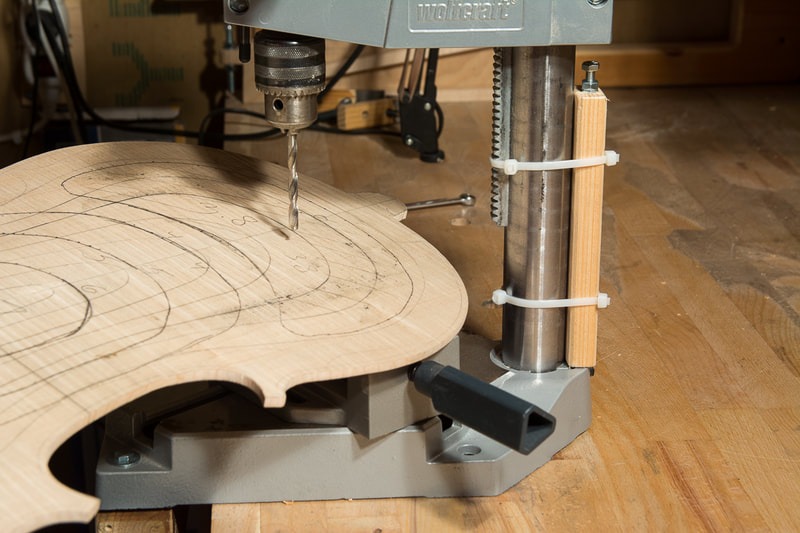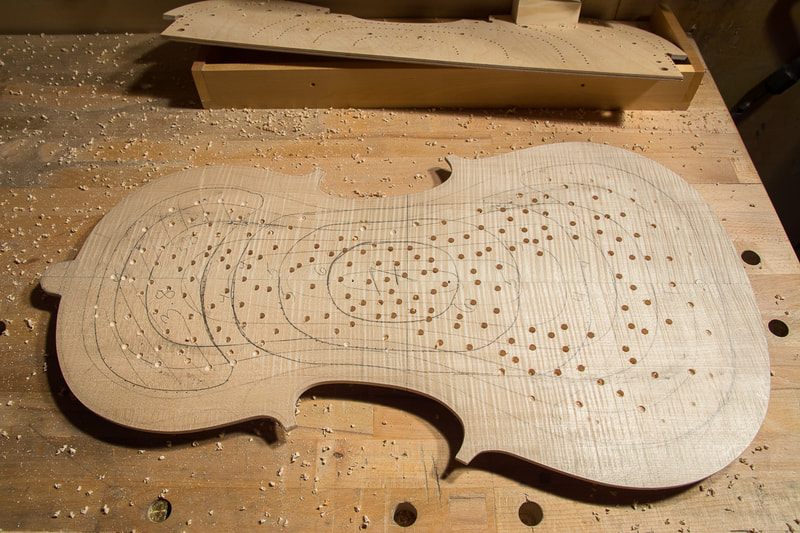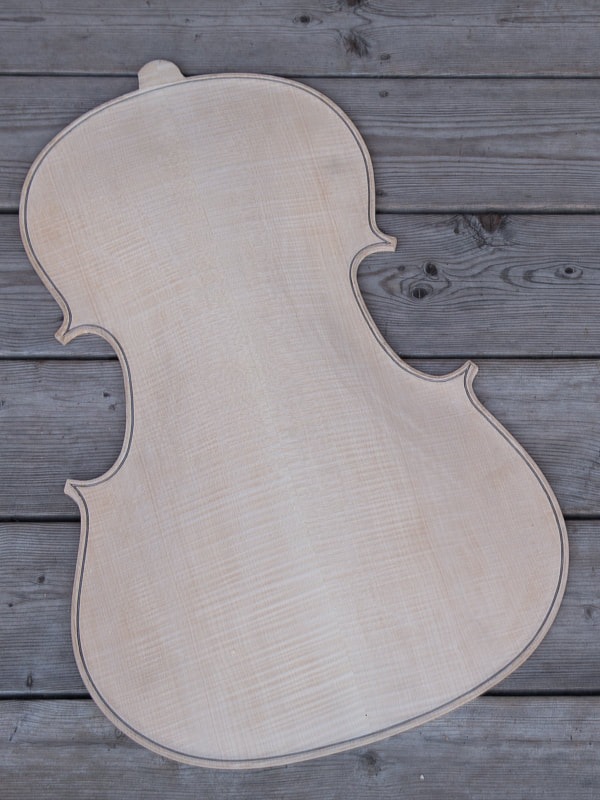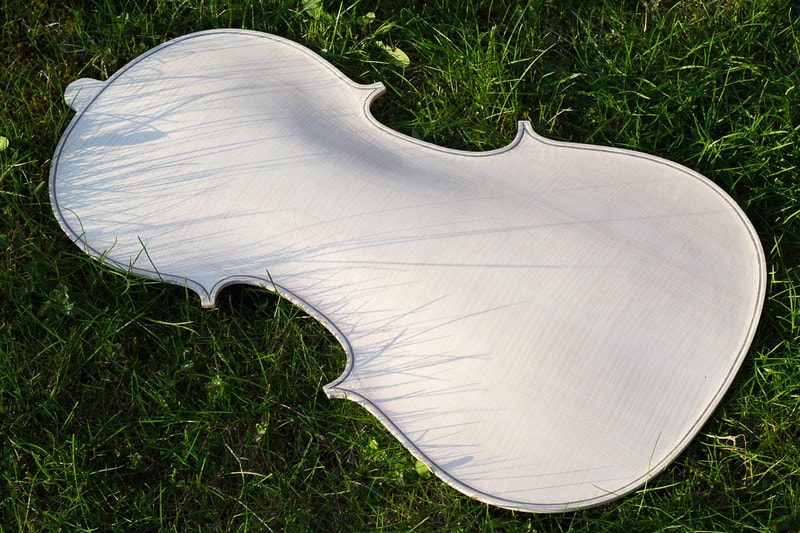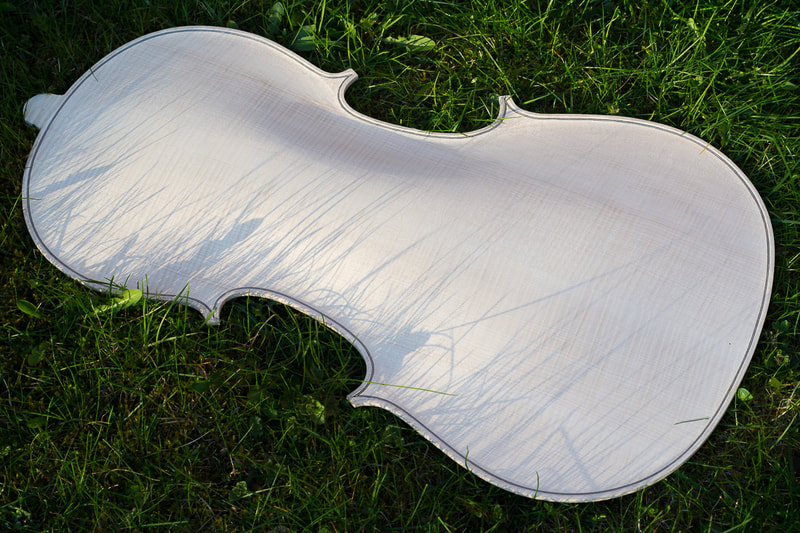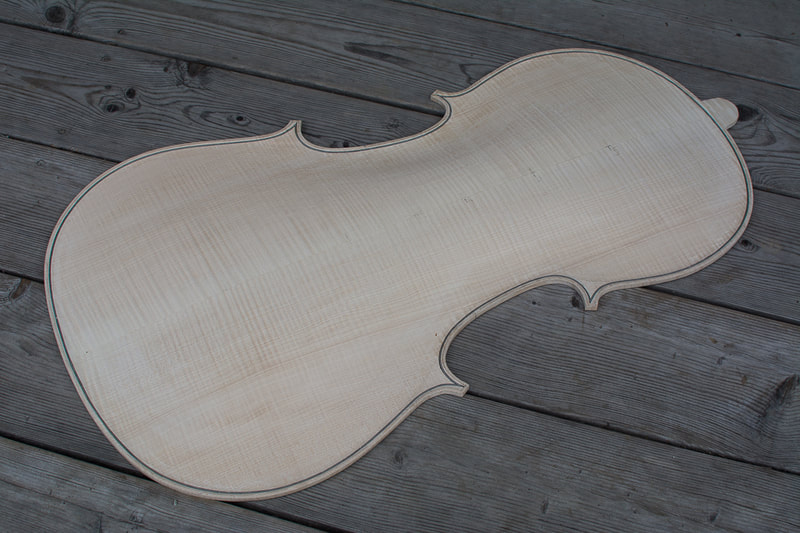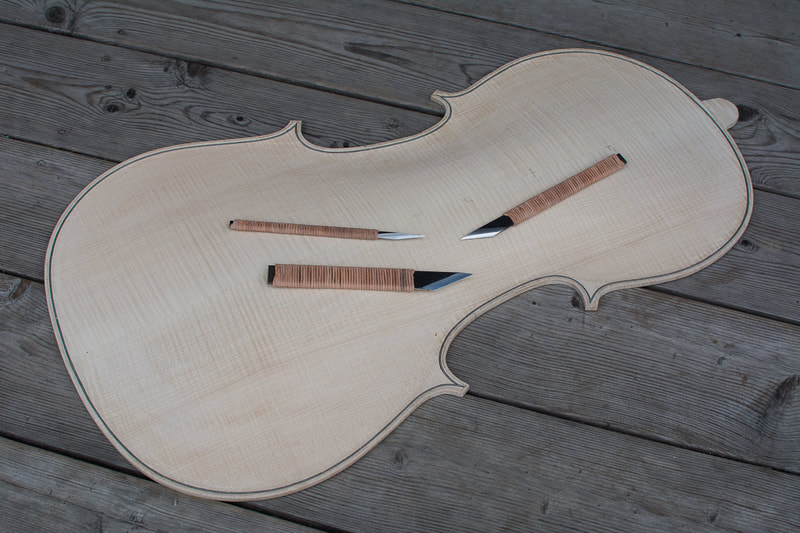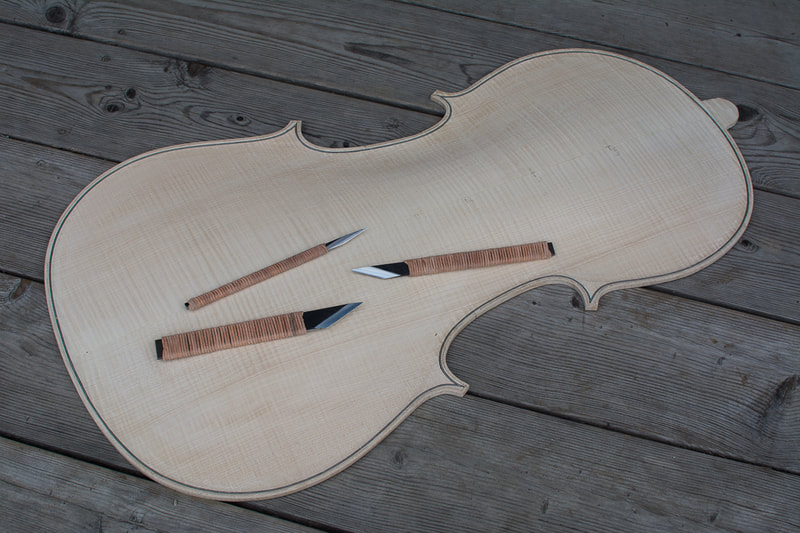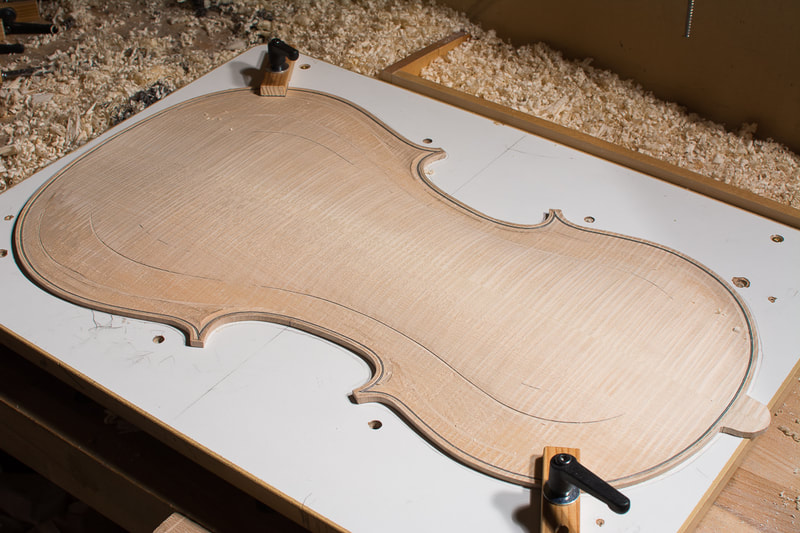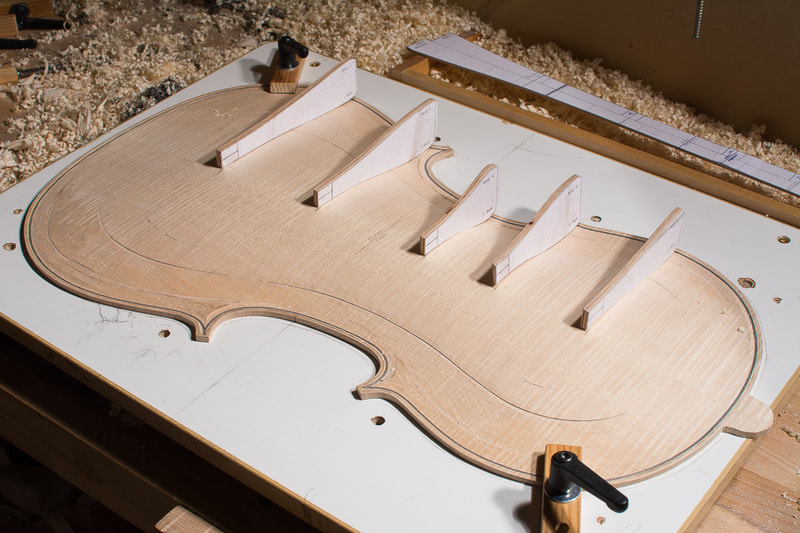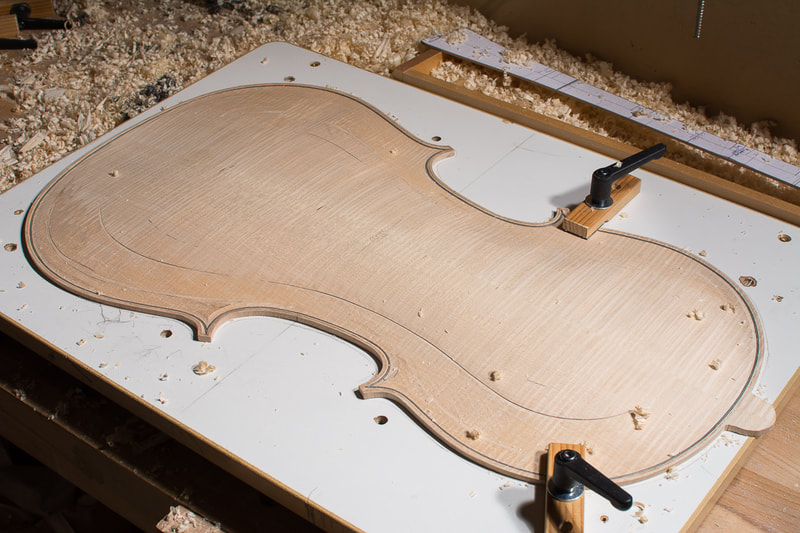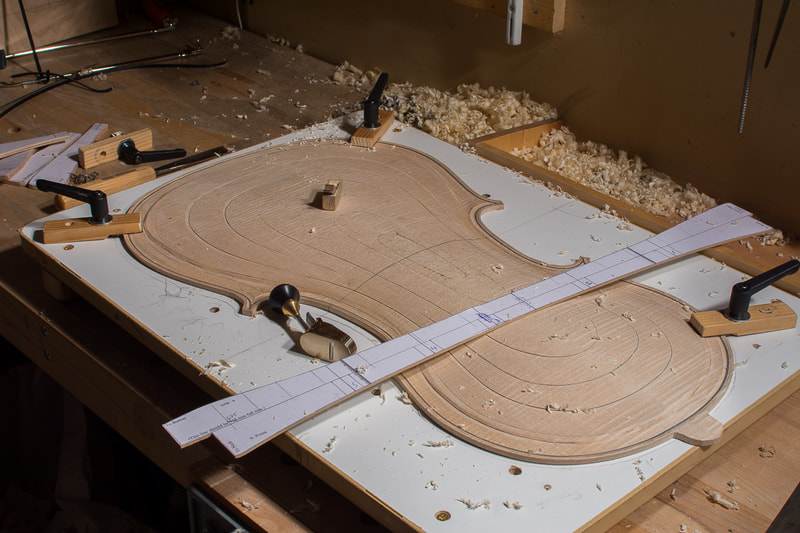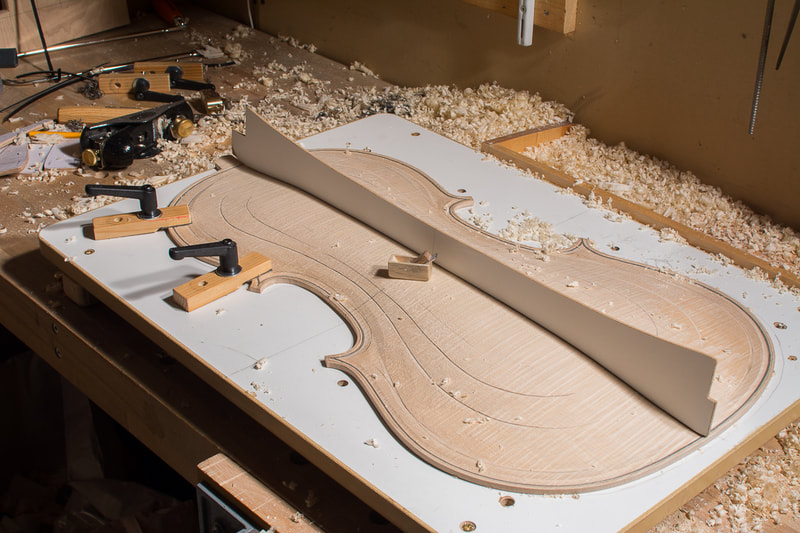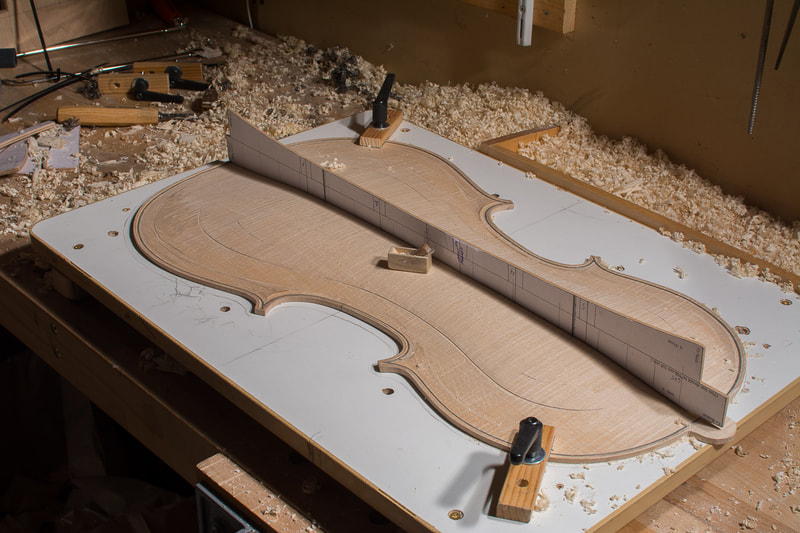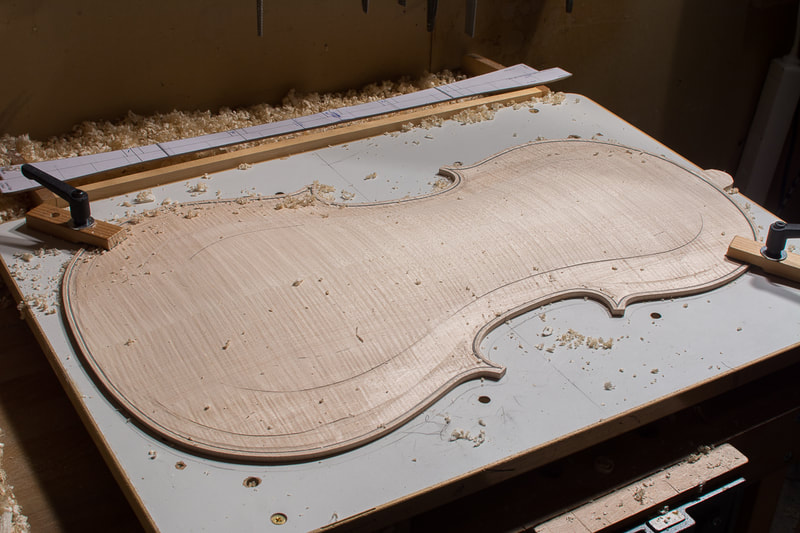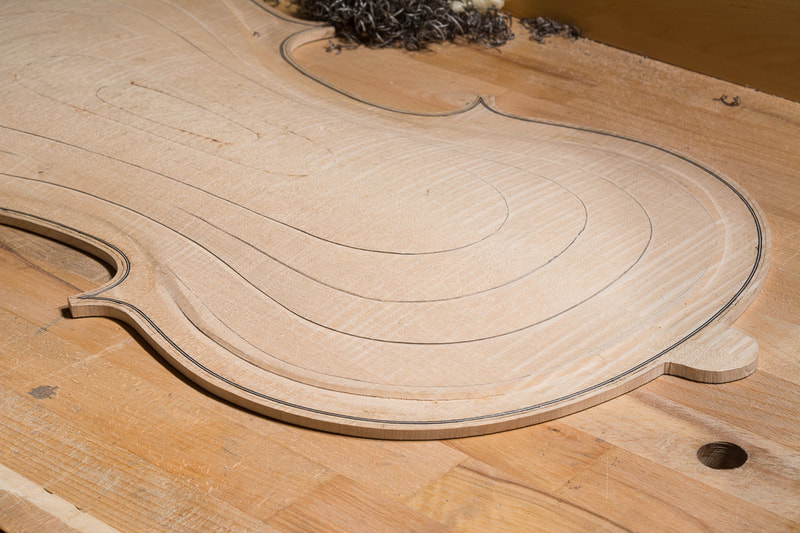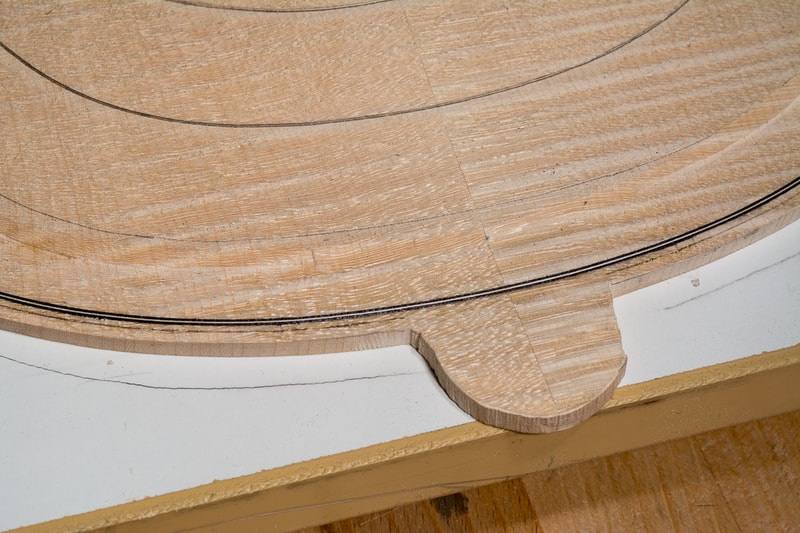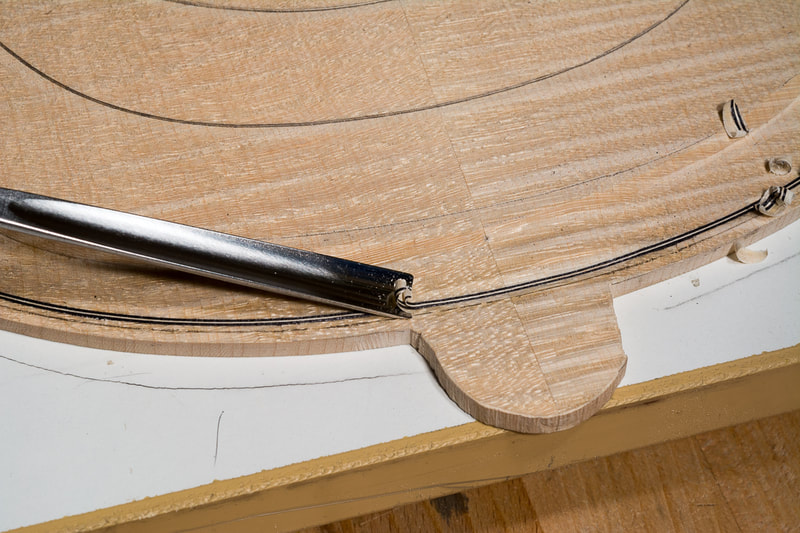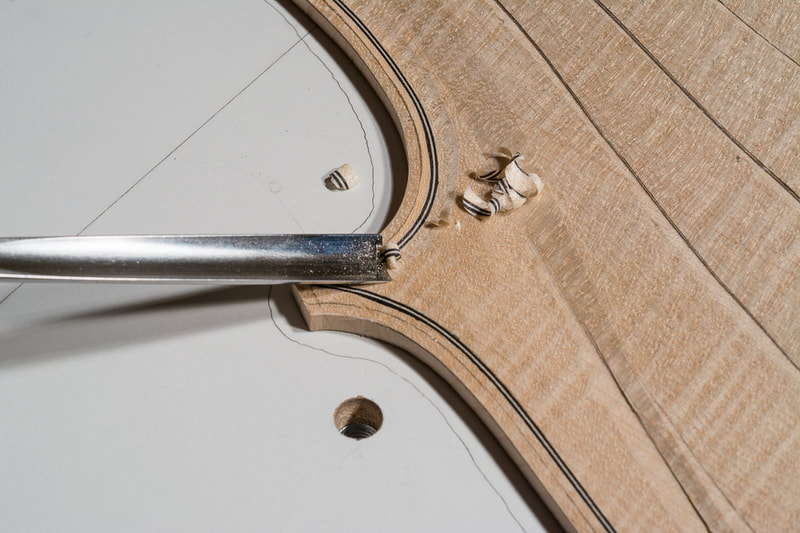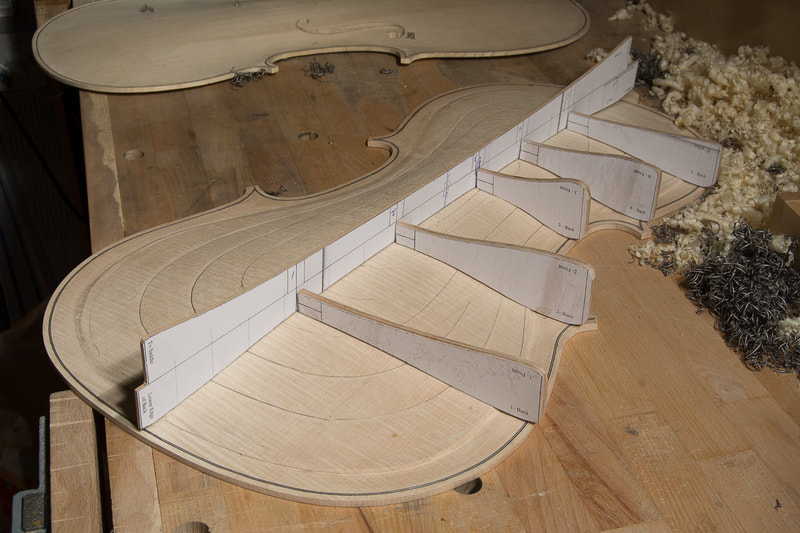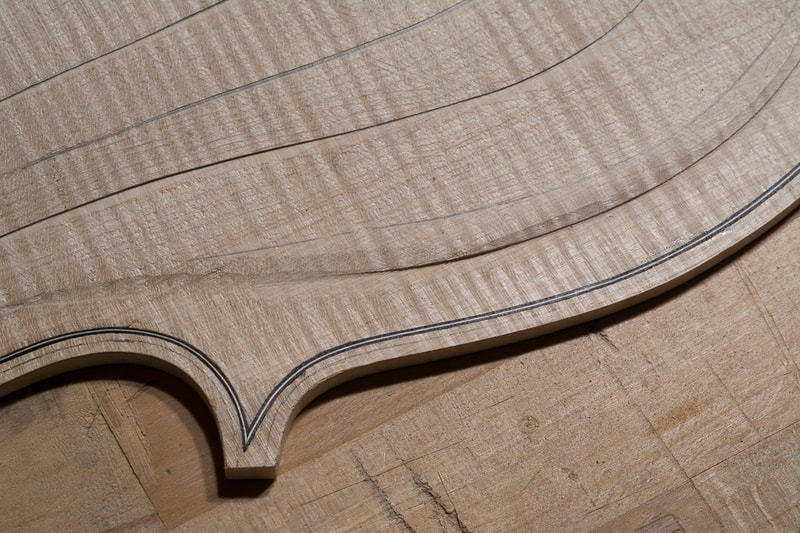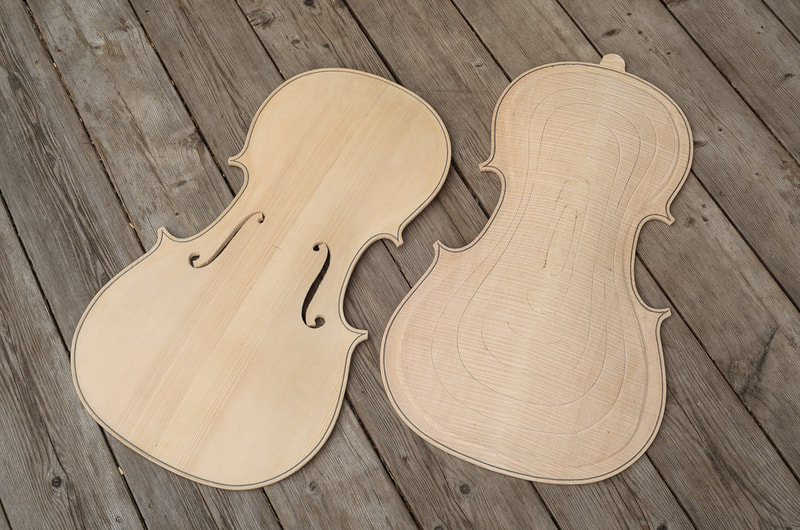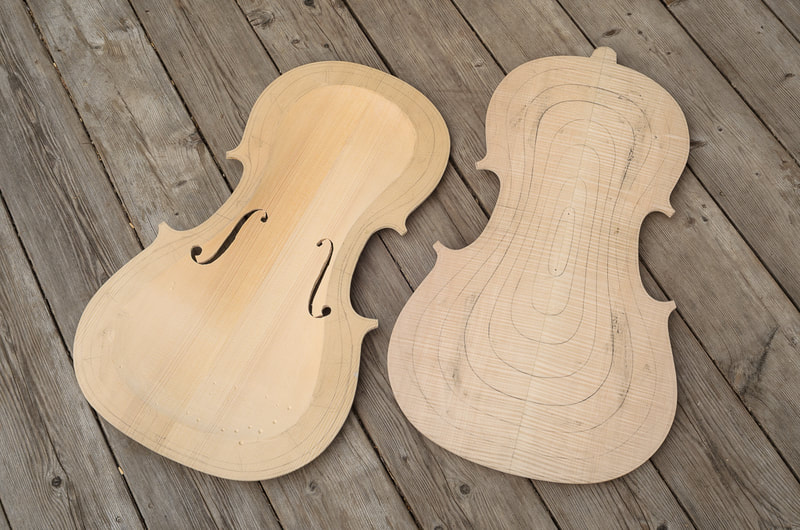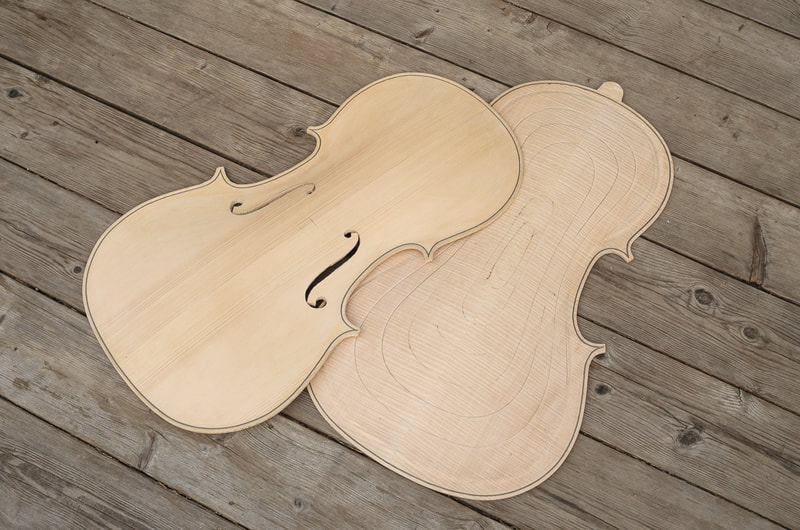|
I finished the hollowing out by planing and scraping the bottom surface smooth. Maybe too smooth for what it would need to be at this stage. Anyways, I now have a nice surface to start the graduation.
0 Comments
I hollowed out the back with the gouge as far as dare. None of the holes are completely gone, but I think I will want to do the rest with planes. The curly maple is hard work. I'm sure to have sore muscles tomorrow. I didn't really know what to do with the contour lines I drew yesterday. I didn't see any point in drilling them to depth since I didn't want to so close to the final thickness. I decided to ignore them for now. I can retrace them from the template later when doing the graduation. The last photo is again a double exposure showing both sides of the back simultaneously.
I didn't mention it yesterday, the back got some dents from the drilling the depth holes. I was a little surprised as I didn't have any problems with the softer spruce front. Maybe spruce just bounces back. I read somewhere that one can wipe the surface with hot water. The water swells the dented wood back. It worked really well. Wetting the wood also lifted the wood fiber but I could fix that quickly with a little scraping. I started hollowing out the back today. I transferred the graduation lines from the templates to the back. I also drilled with the dowel method the depth indicators to roughly desired thickness + 2 mm. The depth stop on my drill press is quite flimsy so I added another one made from a piece of wood and a nut and bolt. This was much more sturdy and I could confidently drill the holes to the desired depth.
Next I will hollow out the back with a gouge so that the holes disappear. I did a bit of scraping today. Th back is a little rough still and needs to be refined but I am pretty close to the final shape. I think Barker wrote that one should be careful not to take templates etc. too strictly. And in fact Strobel also stresses that the templates were for his cello but we should make our own cello. I am taking that as chance to make my own choices. Once refined, the current arching of the back is beautiful in my opinion. I feel more and more that I would now really benefit if I had well made cello to study. Reading books can't quite replace that.
I did good progress this weekend. I continued with the arching. I got pretty close to the the final shape. Still need make sure the arching is nice and even. I also made two more knives, a 12 mm left handed and a 18 mm right handed. Now I have a nice set to work with.
I decided to start with the transverse templates next. I started by planing each template position to down most of the way and finally smoothed the surface between the stations. I didn't go all the way yet, there is ~1-2 mm more material to remove fairly consistently still everywhere. I don't want to have nasty surprises with the curly maple when I come to finish it with a scraper. I only managed to do one side today.
I started the final arching of the back. I am first fitting the longitudinal template. I thought I went too close to the final shape with the rough arching of the front so I made sure to leave more material for the back. As a result I have a lot more to remove this time. But it is not too bad actually. I have a chance to use the plane a bit and get used to the curly maple. It is easier going than I thought. I tried with a block plane (which seemed huge after the small fingerplanes) and a larger fingerplane, but I seem to always come back to the small fingerplane. It fits the fingertips so well and has great sensitivity. I didn't yet quite where I want to get to with the longitudinal template, need to continue tomorrow. The gorgeous pattern of the maple is starting to emerge.
I did the first part of the fluting today. I went with a 10 mm sweep 7 gouge around the edge up to the line drawn 2.5 mm from the edge. The next step is to widen it and merge with the arching of the back.
No much progress on the cello today. One of the buttons on my old Nikon D7000 stopped working reliably. I've had it for many years now and bought it second hand so I am not too disappointed. I like it lot though and it was a shame to realise that fixing it would likely cost more than what I originally paid for it. Luckily somebody close to where I live wanted to sell the D7100 for a very reasonable price. Anyways, finding and getting the camera took most of my free time today. I did manage to shape the transverse arching guides for the back and marked the edge for the back. Tomorrow I can start the final arching of the back with the fluting around the edge.
The photos show how the plates look at the moment. Both have the purfling all round. The front plate has been arched and hollowed, and the ff-holes have been roughly cut. I still need to do the graduation and finish the ff-holes. The back has been roughly arched and has the purfling. The arching needs to be finalised next and then the plate needs to be hollowed. And both plates need to be tuned up.
|
AuthorMy son is outgrowing his cello soon. Could there be a better reason to learn how to make one :). Archives
April 2021
Categories
All
|
